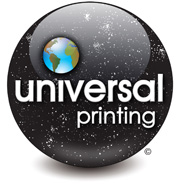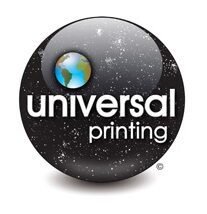Choosing Paper for Your Printing Project… Part 1
Paper comes in all colors, weights, and finishes; and sometimes our customers know EXACTLY what paper they want. More likely, we’ll take in a project where the client won’t have a clue what they want, or even need.
When choosing paper, we need to know some paper lingo. Let’s start with the surface of the paper. Is it Coated or Uncoated? There are different types of coating, based on how shiny it is. Gloss is the smoothest and most reflective. It’s perfect for photos or flyers; anything that needs a quick visual POP. Matte is on the other end of the scale. It reflects very little light, so it’s easier on the eyes when reading text. Paper companies don’t have any rules for how they categorize coatings. There are a lot of in-between terms – Silk, Satin, Dull – but each is still coated and takes ink very well. Some papers are coated on one side and uncoated on the other, called C1S (for “coated 1 side”). With both sides coated it would be C2S, but it’s generally just called Coated.
Uncoated sheets have different surfaces called Finish. Most common are Smooth, Vellum, Felt and Embossed. Again, some paper companies like to be fancy and come up names like “Super Smooth” or “Laser” to describe the finish of their paper. Ink lays down well on most of them, but you’ll want to be careful when using toner-based printers or copiers. This is especially true with Embossed papers like Linen (cross-hatched like fabric) or Laid (similar to corduroy) since the toner won’t sink into the deeper crevices of the paper.
Once you know what the surface is, you’ll want to figure out the thickness. This can get VERY confusing, since it involves three aspects: Caliper, Weight and Bulk.
Caliper is the actual thickness measured in mils (1/1000”) or points. Paper that measures 0.010” thick is 10pt, 0.014” thick is 14pt, and so on.
Weight is the “basis weight,” which is how much 500 sheets weigh at a specific sheet size: 25” x 38” for text weights, and 20” x 26” for cover weights. If 500 sheets of 25”x38” paper weighs 80 lbs, that would be 80lb text and 500 sheets of 20”x26” cover weighing 100 lbs. would be 100lb cover. Often “lbs” is replaced with the “#” symbol, so 100 lbs = 100#. Get the idea? Good! Let’s move on.
Bulk is the overall density of the paper. Like how the metric system measures “mass” instead of weight (on the moon you would weigh less, but your mass still takes up the same amount of space.) It’s a formula that considers Caliper and Weight. In simple terms, thicker sheets have more bulk. Also, coated sheets have less bulk then uncoated sheets, which helps explain why 100# coated cover feels much thinner and less stable than 100# uncoated cover.
Next, paper is classified into two categories: Text and Bond. Cardstock has more categories: Bristol, Index, Cover and Board. Bond or Writing is your general multipurpose paper. It ranges from copier-grade 20# bond all the way up to nice fancy resume-type papers like 28# writing. Text is what’s often used for books, newsletters, flyers, etc. Here’s where confusion starts… in terms of thickness 50# text is equal to 20# bond, 60# text equals 24# bond, 70# text equals 28# bond, and so on.
Bristol, also called Vellum Bristol, is a lightweight cardstock. The surface is a little rougher since it isn’t compressed when it gets made. It feels a little thicker, even though it’s not as dense. This makes it less expensive and is often used for mailers and single-use pieces. Index is smoother and feels thinner and is often used for tabs, file folders – and you guessed it – Index Cards!
Cover is the general usage term for most cardstock weights. It’s usually made to match their companion text weights, so it is usually used for newsletters and books so all the text and cover sheets in the same piece would match. Board is used mostly for display pieces, pocket folders, posters, etc. Unlike other stocks, which are listed by weight, Board is generally selected by thickness (10pt, 12 pt, etc.)
There are so many paper choices available and every single one of them is just waiting for a printer like us to start slapping some ink on them. We love paper – we love, love, love it. If you need help picking paper for your project, please contact our helpful Sales or Customer Service Representatives or a member of our award-winning Graphic Design team. They’ll be more than happy to get you started.
Also check out Part 2: Opacity, Brightness, Shade and Grain.

Universal Printing
Offering quality printing and communications solutions to
Raleigh, Durham, Chapel Hill, and the Triangle since 1979.
www.universalprinting.com
Tags: business solutions, commercial printing, direct mail, graphic design, poster printing, printing, printing services, Universal Printing

Thanks to Don for drafting this incredibly useful ‘paperless’ paper Post!